With modernist landscapes now past middle age, it’s time to consider gardens created between 1930s and 1960s as historic landscapes. What makes a modern garden modern? What aspects are to be treasured and preserved, and what may need careful updating?
Beginning in the 1930s, landscape architects such as Thomas Church, Garrett Eckbo, Dan Kiley and James Rose consciously began integrating modernist architectural ideas into their work and designing landscapes that reflected contemporary life. More than a style, modernist landscapes represented a permanent shift from classic gardens of the past. For the most part, they were designed for middle-class homeowners on suburban lots and are still relevant today. Here are some of the principles modernist landscape architects put forth, along with a few ways that today’s homeowners and designers are updating midcentury gardens.
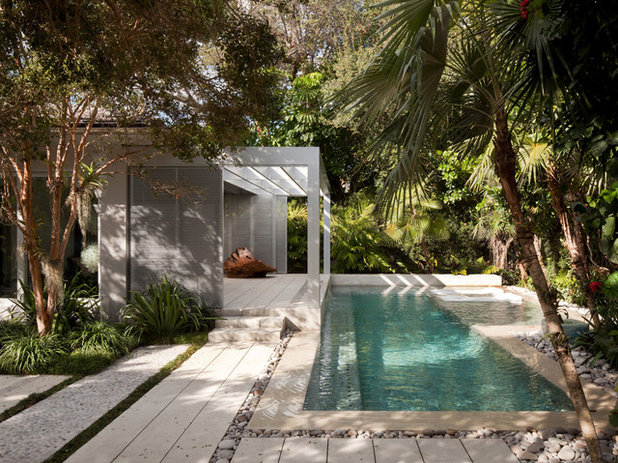
Raymond Jungles, Inc.
1. Delineated spaces. Like modern architecture, modern gardens are concerned with the creation of space, or volume. Modernist garden makers are concerned with the spaces around and connecting to the home, and use trees, shrubs and structures to delineate them. Perhaps more than any other aspect of modernism, the emphasis on spatial volume changed the nature of landscape design.
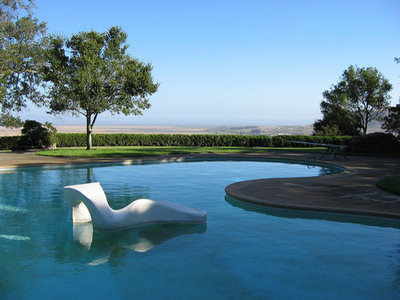
The Cultural Landscape Foundation
2. Biomorphism. First designed by Thomas Church in the Donnell Garden in 1948, and an immediate sensation, the kidney-shaped pool became one of the symbols of the postwar landscape.
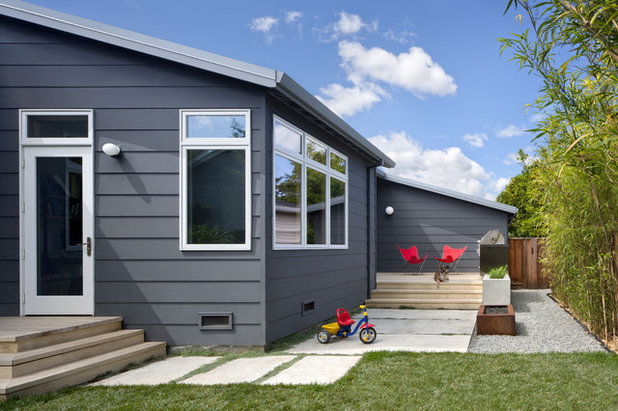
Ana Williamson Architect
3. Living spaces. Church’s book
Gardens Are for People (1955) espouses a pragmatic design philosophy that has forever changed the way we think about residential landscapes. Church believed that gardens were a logical extension of the house and should be designed with a homeowner’s needs in mind, launching the concept of outdoor rooms and outdoor living that is predominant today.
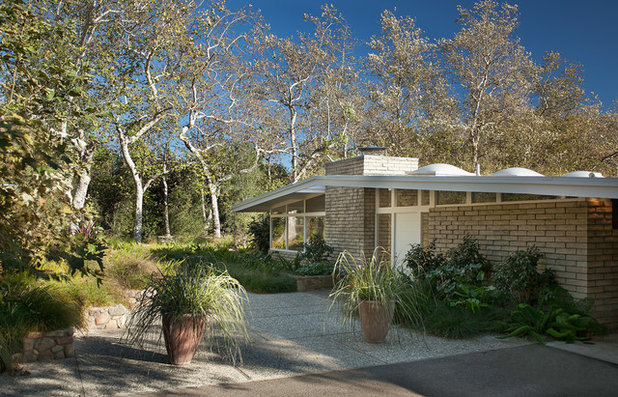 4. A spirit of place.
4. A spirit of place. “
Genius loci“ usually refers to a site’s distinctive atmosphere. Several of the early modernist landscape architects practiced in California, and their designs represent a sensitive response to the climate, topography and vegetation of the region.

yamamar design
5. A connection to the home’s interior. The modern garden evokes a lifestyle of informality. The style grew out of the architects’ and designers’ adaptive use of inventive materials, modern construction techniques and new (postwar) technologies, with the garden and house separated by nothing more than a thin sheet of glass.
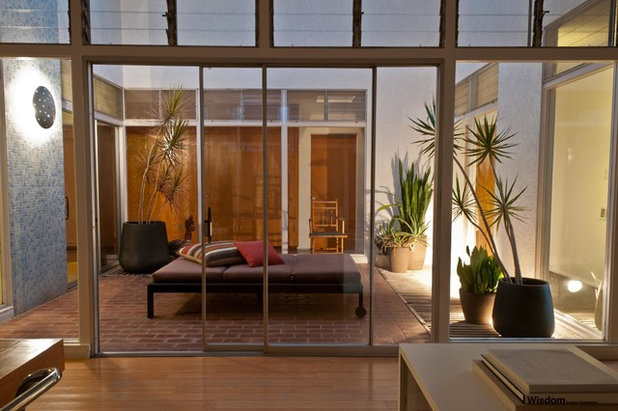
June Scott Design
6. An atrium. Sometimes the outdoors is actually
within the home. The central atrium shown here provides fresh air and a spot to showcase sculptural plantings and furniture.
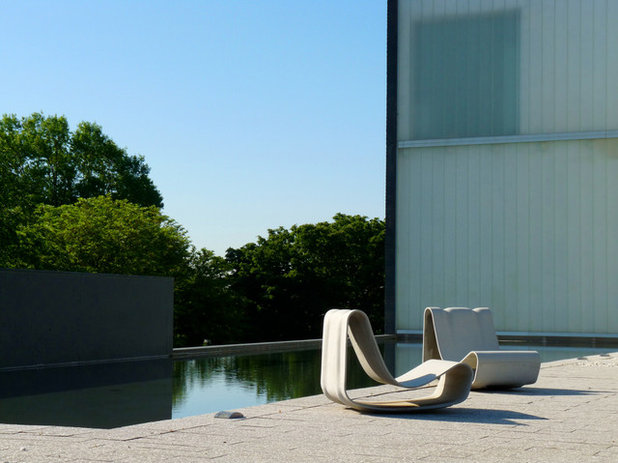
Stardust Modern Design
7. Lack of ornament. Modern architecture’s principle that form follows function has led to a stripping down of previous styles. Similarly, modernist gardens reject the ornate garden furnishings and floriferous plantings of the past.
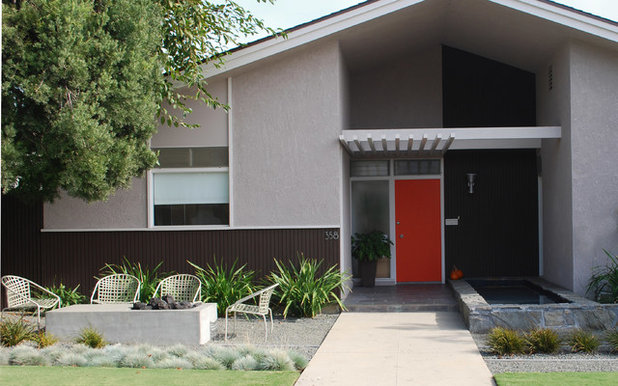
June Scott Design
8. Plants as sculptural forms. As plants became elements used to define space, their sculptural forms became highlighted in modernist gardens. At the same time, a low-maintenance approach that emphasizes form and texture over floral display has become popular and continues to develop today.
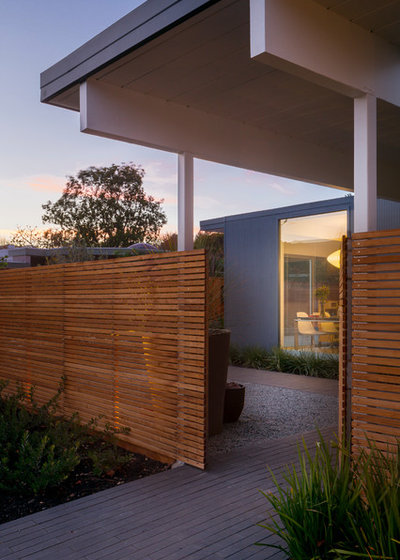
building Lab, inc.
People are adapting these modernist architectural ideas to today’s lifestyles in any number of ways, including:
Adding privacy. Large expanses of glass used in modern residential architecture open views from the house to the outdoors. But glass also allows views
into the home. Semitransparent fencing is one way to gain privacy while screening views and maintaining airflow.
See three modern homes with innovative screening
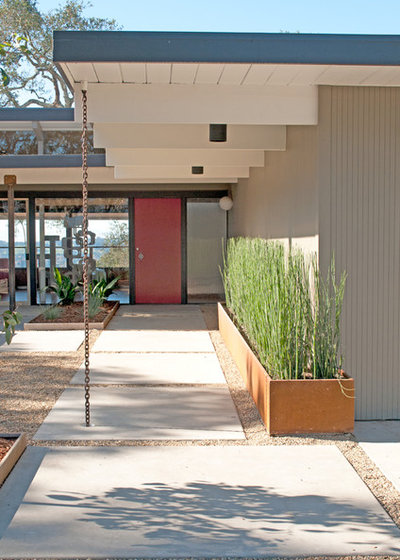 Going gutter free.
Going gutter free. Midcentury modern homes are usually defined by the lines of their roofs and beams, making gutters unwelcome details. Rain chains (preferably connected to dry wells or planting areas to keep water onsite) can be a handsome way to direct rainwater.
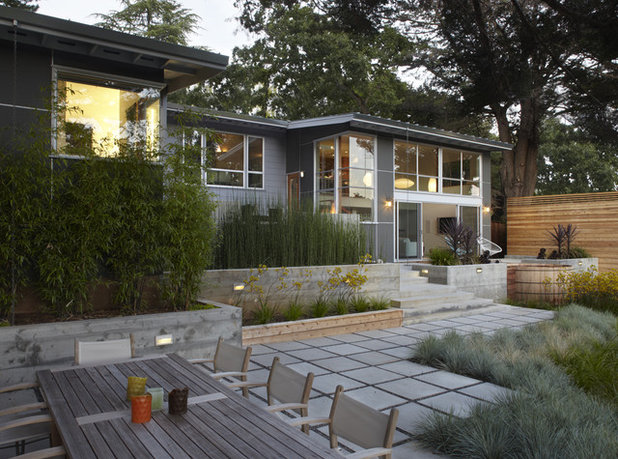
Allwood Construction Inc
Turf reduction. Lawns became the rage in the 1950s, when the postwar American dream of owning a house in the suburbs melded with the widespread availability of power mowers. Today, however, many homeowners are trading in their lawns for more ecologically friendly alternatives.





